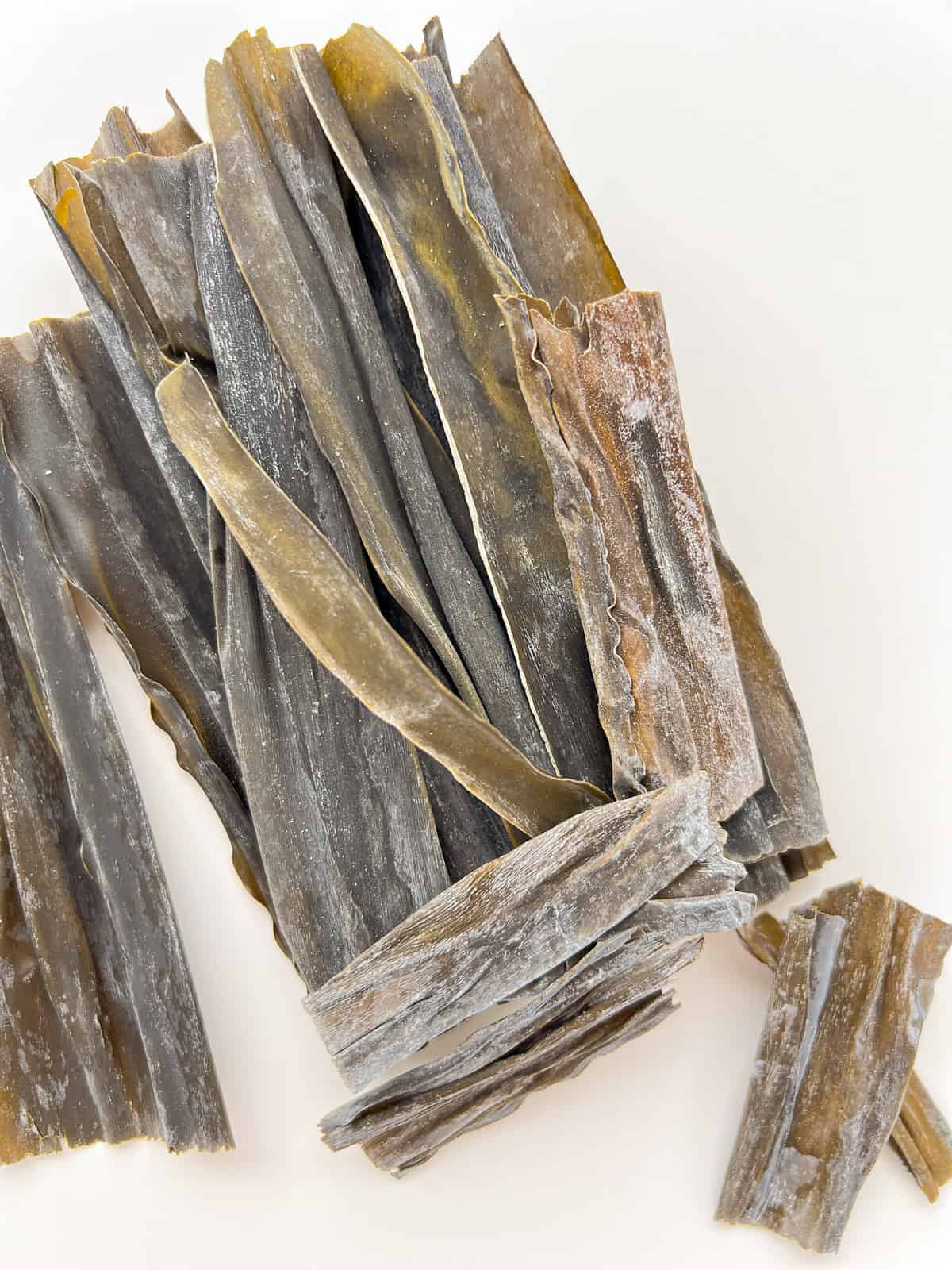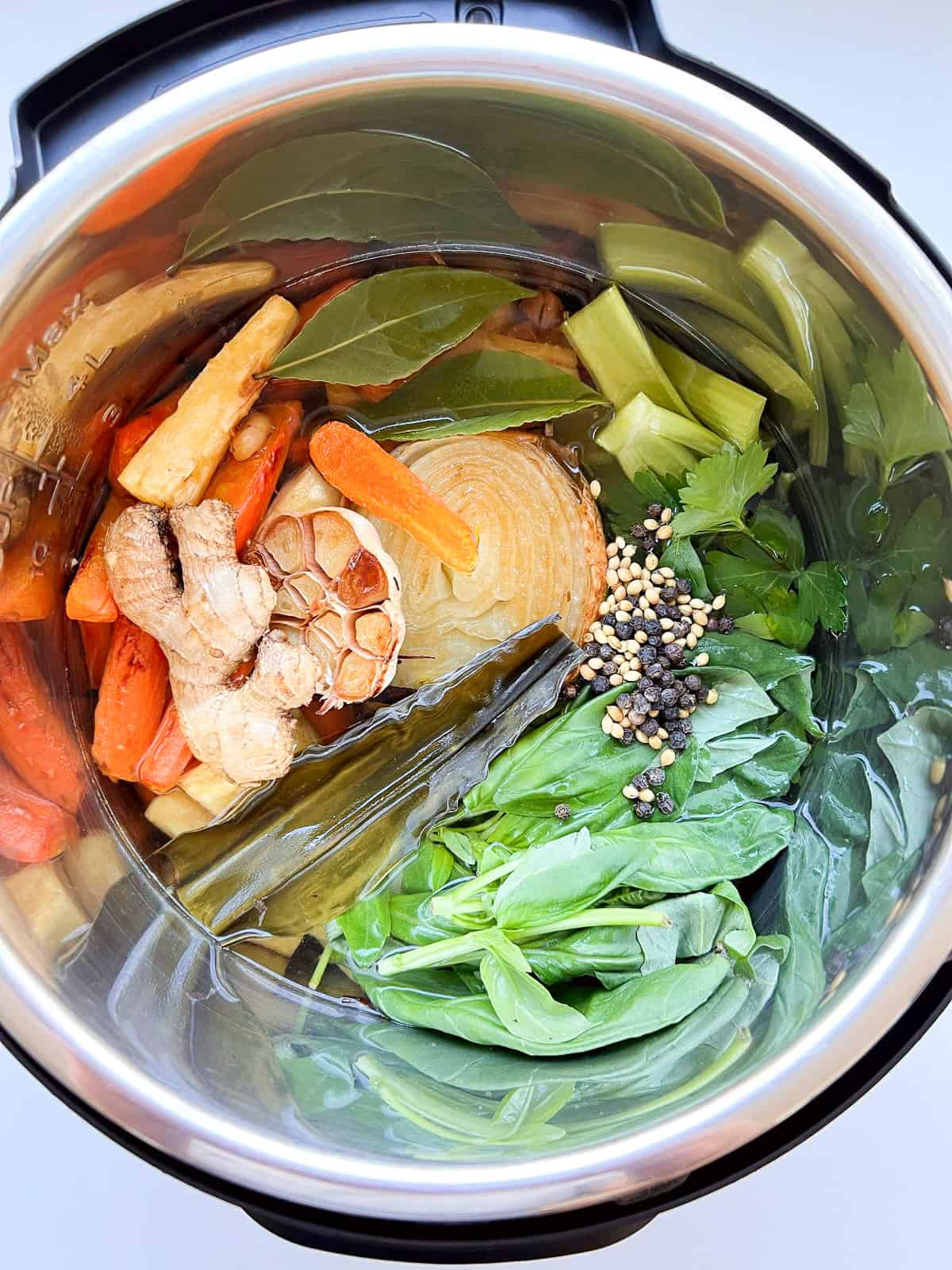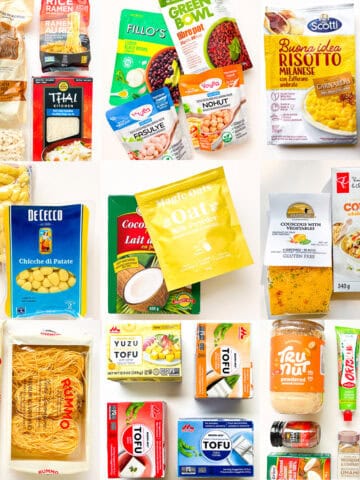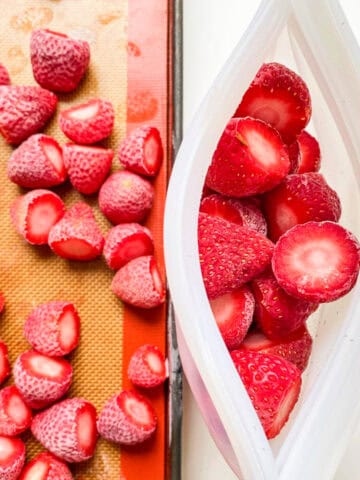Kombu is an edible seaweed in the kelp (Laminaria) family, widely eaten in numerous culinary cultures from China to Iceland for at least the past 1500 years. Kombu can be eaten in various forms, alone or as a key ingredient, freshly picked, pickled, or dried, either whole, shredded, or powdered. A Food Find pantry essential, kombu is rich in trace minerals, and mild in flavour, imparting a gentle salinity and providing an appreciable seasoning enhancement when used in cooking everything from beans to soups. Notably, kombu is one of the main ingredients used to make dashi stock, a fundamental component of Japanese cuisine.

Dried kombu seaweed in its whole, or stick, form.
Interestingly, dashi stock, and kombu specifically, play a fundamental role in the origin story of the word “umami,” a term which enjoys continued vogue in culinary parlance, but was (to my surprise) actually coined over 100 years ago. In the early 1900s, Dr. Kikunae Ikeda, a biochemist who is still considered one of Japan’s “ten great inventors,” found that there was “another taste” in addition to the familiar quartet of sour, sweet, salty, and bitter flavours. This fifth taste was described as “brothy, meaty, or savoury”, a taste he named “umami.” He specifically found this taste to be characteristic of broth prepared with kombu and dried bonito, that is, dashi broth.
Dr. Ikeda’s chemical studies of the properties of kombu led him to the understanding that kombu rich broth contained glutamates - amino acids - which are found in high protein foods, and also produced within the human body. His research found that the naturally occurring glutamates in kombu caused the taste sensation of umami, and that the addition of salt in particular increased the perception of umami flavours in cooked food. (As a side note, glutamates were not found to noticeably enhance the flavour of sweet foods.) In 1908, as a result of his research, Dr. Ikeda filed the first patent to commercially produce MSG, the notorious flavour enhancing seasoning, which was initially derived from kombu, and is now commercially produced from other ingredients.
All this to say: using kombu, and salt, in the preparation of a wide variety of dishes is sure to increase the flavouful “umami” seasoning of almost anything savoury you might be making; a pantry staple that you could easily refer to as nature’s flavour enhancer!

A stick of whole kombu nestled into the ingredients of the broth for Vegetarian Matzo Ball Soup with Roasted Parsnip, Ginger, and Basil Broth.
Where to find Kombu
The kombu I most often encounter and seek out is found in small packets, featuring short dried strips of the dark green and leathery seaweed with a telltale white grey dusting of dried sea water. Packages of kombu can be found readily at health food stores, Japanese grocers, and other Asian markets, and can certainly be found online from a wide range of vendors. Certain brands may feature a ‘wild harvested’ designation (kombu is cultivated as well as picked from the wild) or a geographical appellation that may originate anywhere from Hokkaido to Vancouver depending on the purveyor. One small packet may contain as many as 20 dried sticks of kombu, and once decanted into an airtight container - a tall glass jar is my vessel of choice - dried kombu can last almost indefinitely as a stable pantry essential, depending on how often you use it.
Ways to use Kombu
I really don't recall when I learned this vegetarian cooking tip, but for as long as I can remember I have included a dried stick of kelp when cooking beans from scratch; anecdotally, using kombu when cooking increases the digestibility of beans. So every time I cook a pot of beans from scratch (most often in my trusty Instant Pot) I just throw a stick of dried kombu in, and just fish it out when the beans are done. A small dried piece of kombu can expand to a surprisingly large size, and much more closely resembles something you would find on the seaside once it has been fully rehydrated.
Another essential use for kombu is in stock, broth, and soup - from the broth for my Matzo ball soup to my split pea soup, I always start things off by including a piece of kombu and consider it an essential ingredient in building flavour in almost any liquid, savoury preparation. And of course, if you are making homemade dashi broth, kombu is the essential ingredient.
While many people love to eat cooked kombu, especially after it has been steeping in a tasty broth or pot of beans, I personally don’t enjoy the texture. Others definitely find it quite appealing, in which case, slice it up and dress it with soy sauce and sesame seeds to accompany Essential Baked Tofu Cubes, Fresh Garden Furikake and steamed rice for a particularly nourishing meal.
As I don't eat cooked kombu myself, instead of throwing the used kombu into the compost as waste, I retrieve the intact cooked piece of seaweed after it has done its job, let it cool, and then shred it up as a much loved addition to the daily meals of my pup Mickie. He literally goes a little berserk when I say “kombu in your dish” and runs to gobble it all up anytime I have some to offer, making kombu an especially flavorful and nourishing ingredient for both humans and dogs alike!





Leave a Reply